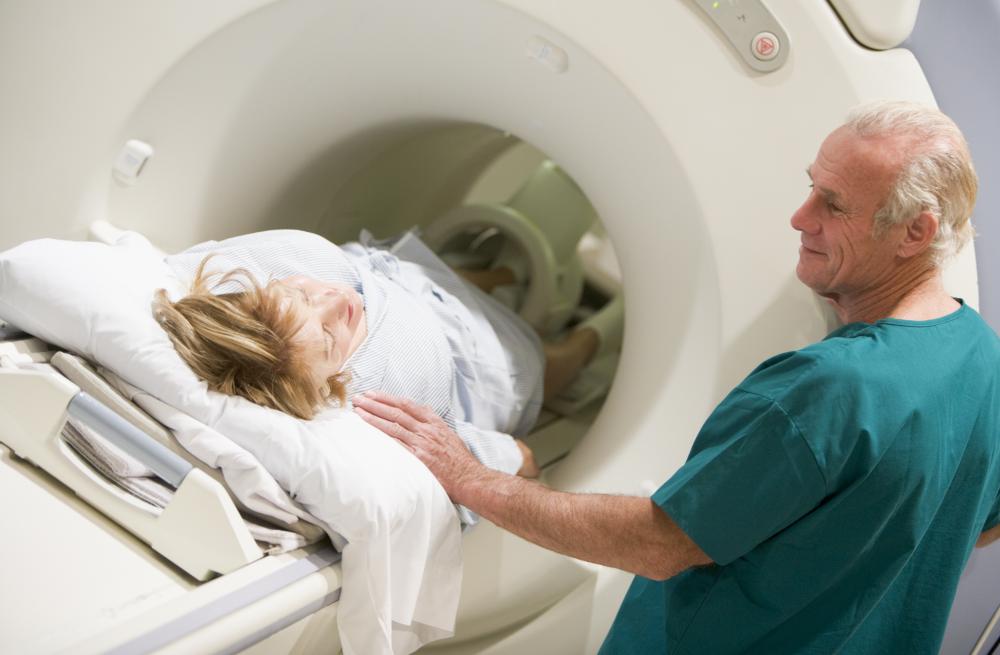At WiseGEEK, we're committed to delivering accurate, trustworthy information. Our expert-authored content is rigorously fact-checked and sourced from credible authorities. Discover how we uphold the highest standards in providing you with reliable knowledge.
What are Mirror Movements?
Mirror movements are seen in people with neurological disorders that cause them to involuntarily move both sides of the body when initiating a voluntary movement of one side of the body. In a simple example, a person could reach for a door handle with the right hand, and the left arm and hand would make the same reaching and grasping motion involuntarily. Mirror movement disorder, also called mirror dystonia, is relatively unusual and can become an impairment for the patient, as it interferes with the ability to perform tasks where the arms and legs need to work independently of each other.
Babies and children up to about the age of 10 exhibit some mirror movements. Pathways in the brain continue to develop throughout childhood and when people are first born, they lack the fine tuning that allows them to move limbs independently. Thus, babies do things like kicking with both legs when they mean to kick with one, or involuntarily moving one arm while initiating an intentional movement with the other arm. In a very small percentage of people, these mirror movements will persist into adulthood.

Some individuals develop mirror movements as a complication of neurological disorders like Parkinson's disease. As the connections in the brain are broken down by the degenerative disease, the patient loses some motor control and develops involuntary movements including tics, tremors, and mirror movements. If someone develops this neurological problem suddenly, it can be a sign that something in the brain is going wrong.
In a very small percentage of the population, this condition is caused by a genetic variation. Research in the early 2000s identified two families, one in Iran and the other in Canada, with an inherited mirror movement disorder. Members of both families experience errors during the development of the brain that leave some neurons in the wrong hemisphere. As a result, when one hemisphere initiates a movement, the neurons along for the ride respond as well, causing the limb on the opposite side of the body to move too.
People with mirror movements can have difficulty with tasks like typing, knitting, and other activities where the hands need to move independently. Although the mirroring is usually not precise, it is disruptive enough to make it difficult to control the other hand. Adaptive technology can be used to assist people with the completion of tasks that might otherwise be challenging. Some patients also experience benefits from physical therapy and medications designed to address tics and tremors.
AS FEATURED ON:
AS FEATURED ON:











Discussion Comments
I'm receiving acupuncture treatment for involuntary tics and have experienced significant improvement. There is a theory that just as our mind sends signals to the limbs for movement, signals can also be sent to the brain through certain points in the limbs.
I highly recommend speaking to an experienced acupuncture practitioner about your son's condition. I don't think there is any harm in trying.
My son has had this condition since he was born and he is now eight. I'm surprised to know that this can be genetic because no one else in my family or my husband's family has it.
Since my son is young, his doctor believes that he may be able to overcome this issue as he gets older. He is going to physical therapy regularly. He is also getting psychological therapy because we don't want this condition to affect his self-esteem.
I'm looking into treatments and therapies in alternative medicine but so far I haven't found anything.
Does anyone here know of any alternative medicine remedies that may help my son?
For a minute, I thought that mirror movements was referring to another neurological disorder. There is a disorder where a person repeats movements that he or she sees in someone else. I guess that's called something else.
Post your comments